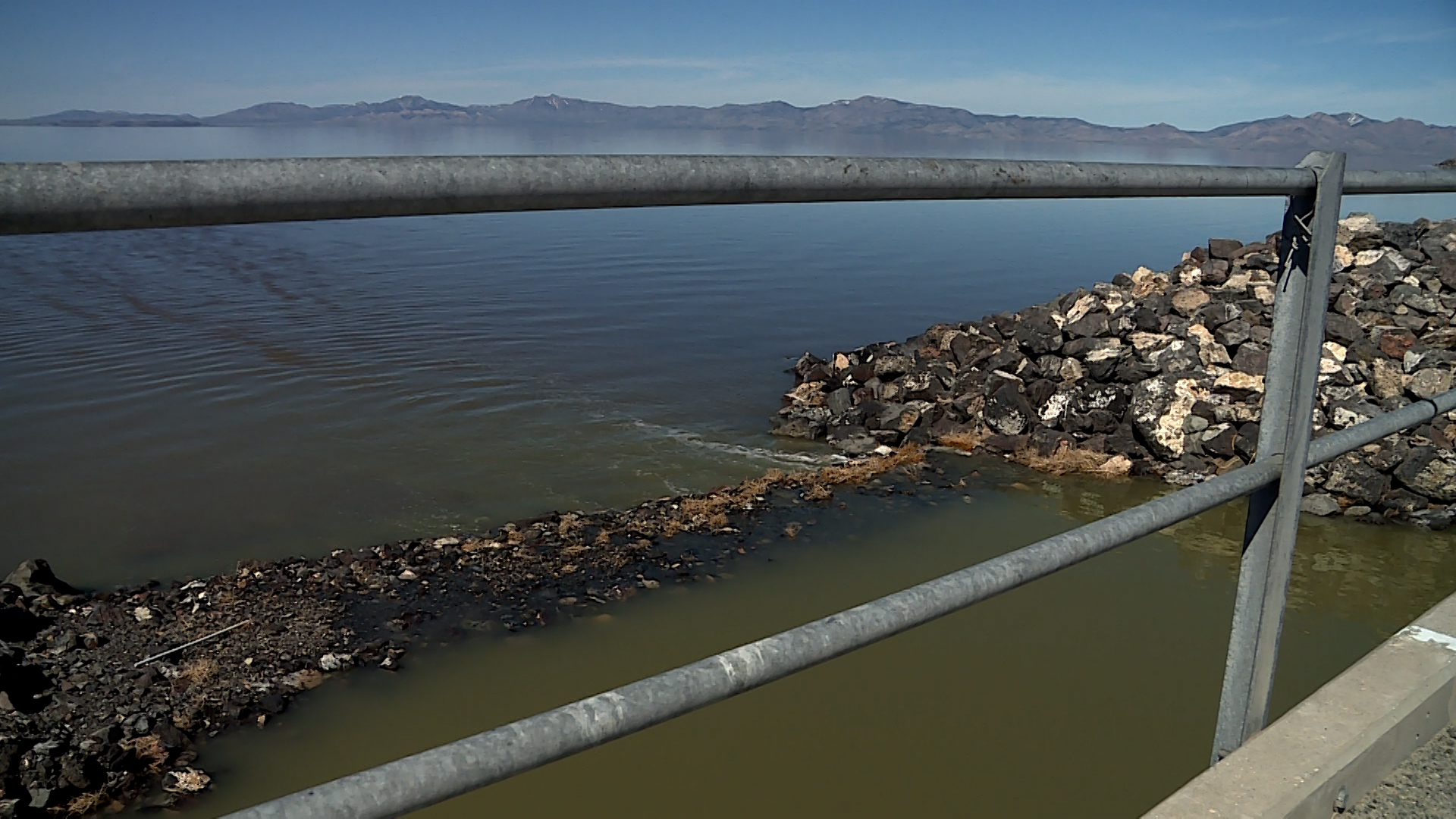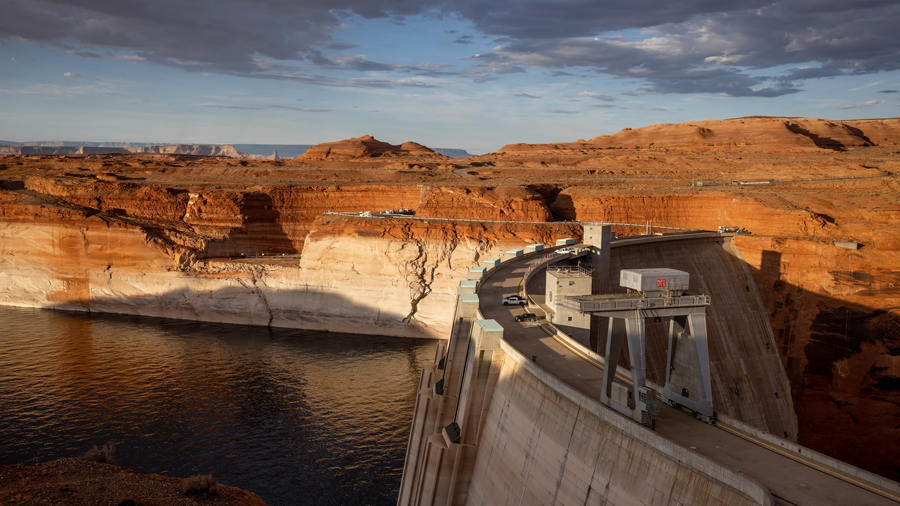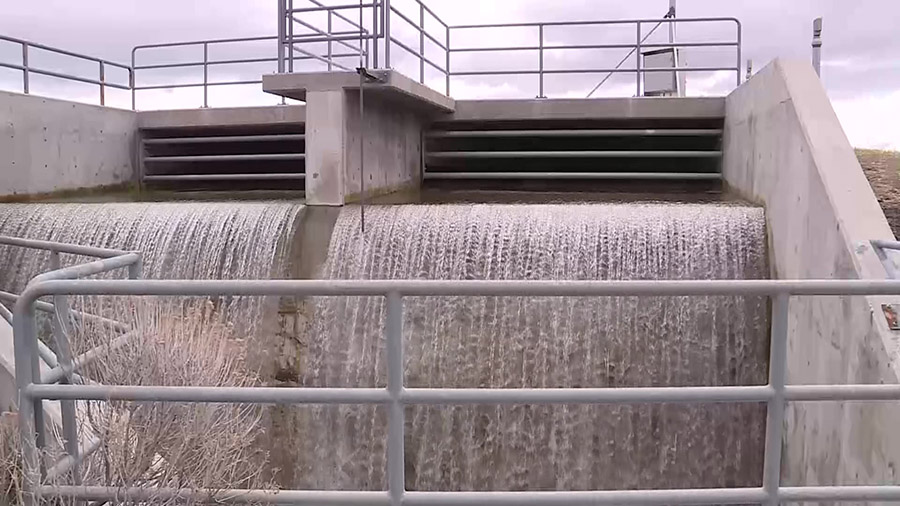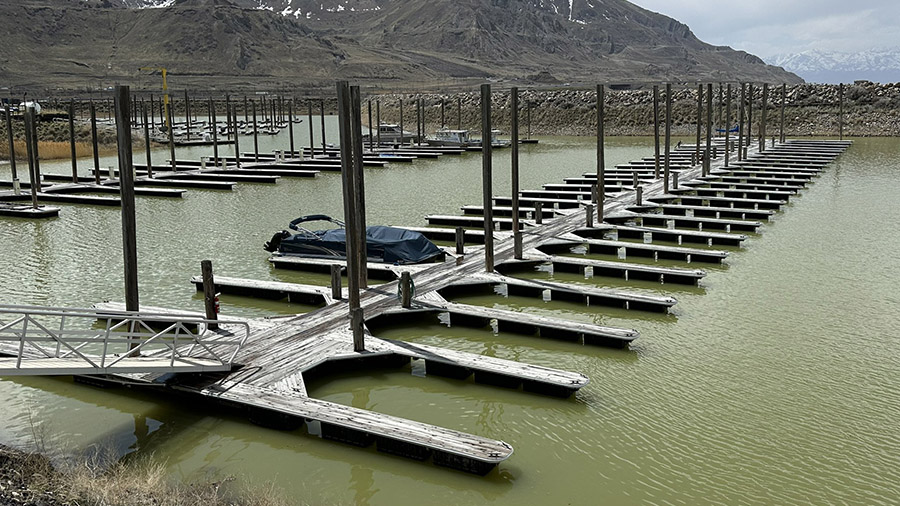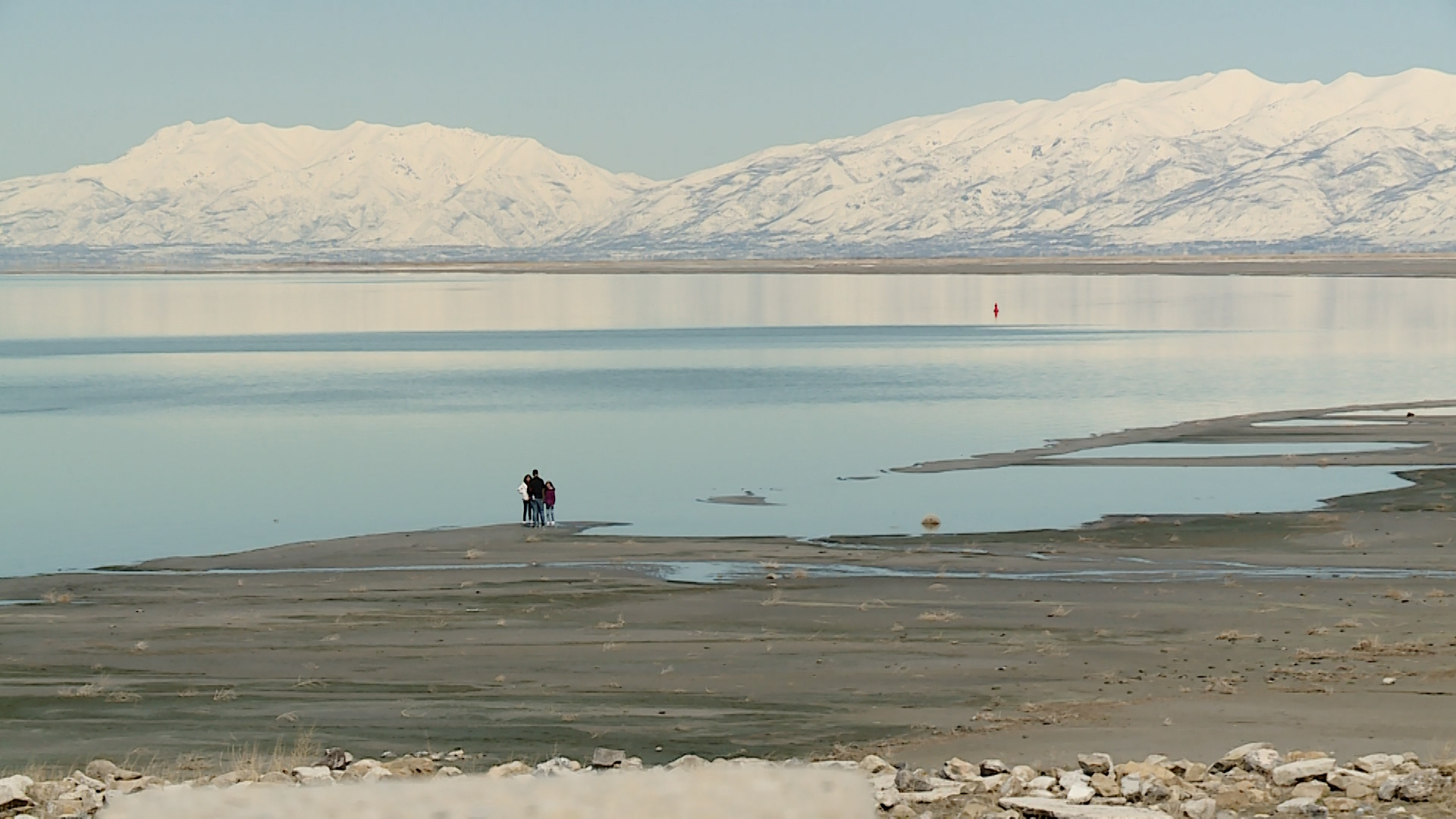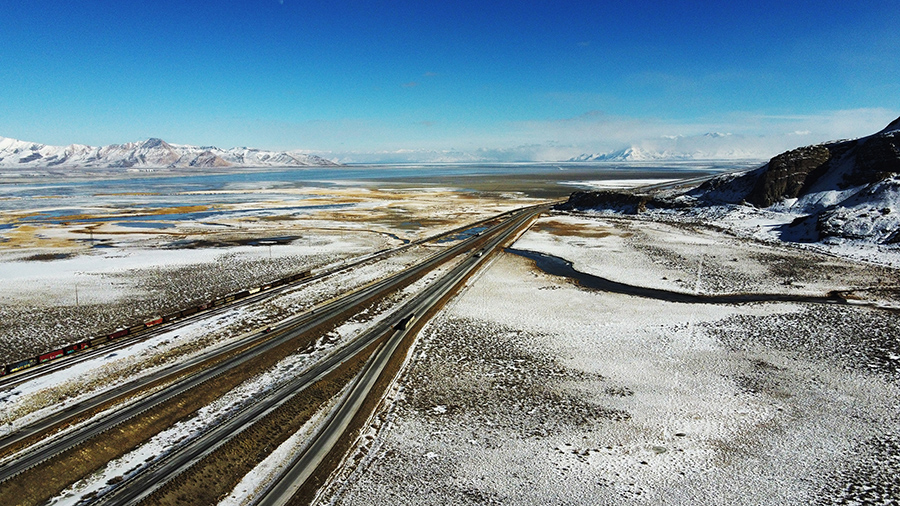GREAT SALT LAKE
Can this technology be an answer to farmland water use in the West?
Jun 6, 2022, 11:41 PM
This article is published through the Great Salt Lake Collaborative, a solutions journalism initiative that partners news, education and media organizations to help inform people about the plight of the Great Salt Lake — and what can be done to make a difference before it is too late. Read all of our stories at greatsaltlakenews.org.
CASTLE DALE, Utah — Rod Magnuson has a nice spread in rural Utah, raising cattle and alfalfa in an operation that is the backbone of a fourth-generation legacy spent in agriculture.
The drought turned his prospects for survival into a nightmare.
A ton of hay went for $135 in 2019.
In 2021, agricultural producers paid $195 a ton.
This year? It’s $325 a ton.
The price of fertilizer for growing hay and other crops has spiked to levels not seen since 2008, which, along with energy costs, prompted riots in 40 countries around the world. In 2022, it is easily three times as much as a year ago for certain types of fertilizer.
Giving in or going big
Magnuson is comfortable in his rancher’s skin, with an amiable smile, rugged good looks, and a quiet and shy demeanor that nevertheless seeks to accommodate a small group of media firing questions at him on a recent May morning in Castle Dale, Utah.
As he explains the storage capacity of a pair of grain silos outside this building, there is the smell of ranching that wafts in the wind. Could be manure, could be the processing of white wheat ready to “plant” when it’s ready.
Each of the silos holds 28 tons that are part of a unique growing operation, that at this time, is the largest of its kind in the United States.
All eyes are on this building and the promise it holds for saving water and preserving a way of life that has been the hallmark of the West — providing not only food and fiber — but a tradition that fosters carrying on hard work that builds character, toughness, and appreciation for land.
Utah and other states throughout the region have been struggling with a more than two-decades-long generational drought made more complicated by raging catastrophic fires destroying private and public rangeland.
This new technology is not the panacea, but it reduces agricultural water use, helping to keep more water in the system — water that along the Wasatch Front could help the Great Salt Lake, which dipped to its historic record low last year and will likely recede even more this year.
The building on Magnuson’s property and what is inside represents a $650,000 investment that will save a tremendous amount of water and keep the rancher in business. It’s a shining light of hope for this cutting-edge technology to be a savior that is still bumping up against skepticism or wariness from bankers. He said he found a bank that loaned him the money, but will others take that leap? He does not know.
Magnuson could have walked away from the stress of farming and ranching. Without this technology, he said he would have been done. But when he looked into the faces of his five sons, their eyes, and that of his wife, Jodi, turning his back on his family legacy of ranching was an option that withered like plants in a drought.
“I had to do something or I would have gone out of business, so I had to do this,” Magnuson said.
He opened the door to where all the magic takes place and introduced us to Hydrogreen nutrition technology.
In this 75-foot by 40-foot structure, there are three towers with multiple trays that produce 9,000 pounds of feedstock per day.
There is seed at the bottom that grows into forage that is mixed with straw to reduce its protein content. It consumes less than one-tenth of the water used in traditional hay fields, and this operation replaces the land and water of what a 450-acre hay field demands. And it can do it 365 days a year.
It is a five to six-day growth cycle from start to finish, and the out-the-door costs are $65 per ton of feed compared to more than $300 per ton of hay.
Fodder or fields offer choice
Magnuson planted his first crop in the six-level towers on Christmas Eve last year. It earned a slight rebuke from his wife, Jodi, because what should have been an evening of family gathered around the celebration of the coming birth of Christ instead was the coming birth of something untried, untested, and running on faith. The metaphor did not escape Jodi Magnuson.
“We have these five boys that we are trying to secure a future for,” she said. “They are all interested in carrying on.”
In front of her are the towers of grain that had sprouted into forage.
Jodi Magnuson in particular is looking at her oldest boys, the twins named Wyatt and Will. They will turn 22 in August.
“I think this will pull us through the drought,” she said, and as the sounds and smell and light come rushing through in this growing operation, a smile takes over her face.
“It has to,” she said. “It will.”
The test of time
“This will be the future of agriculture with land and water issues we face these days.”
That is the outlook of Lee Magnuson, the brother of Ron Magnuson. He looks on at the operation and is hopeful.
He is a dealer, a supplier of this technology, although he did not sell it to his brother.
“You can’t pay for land with cows and feed and produce it today with the dollars needed,” he said, passion beginning to grow in his gestures and voice. “This is a solution to a problem where there is no more water, no more land, and we still have to grow the feed. But we do it in a smaller footprint.”
Agriculture consumes 80% of water in the Colorado River Basin which includes Utah, six other states, and Mexico. In this region, drought is horrific.
In drought, in time of growth, in time of all those agriculture shortages, is this Hydrogreen technology Magnuson invested in a possible solution?
“I think everybody who needs a secure food supply for their animals needs to look into this,” Lee Magnuson said. “I think this is the future of agriculture.”
In a legislative hearing in mid-May, Rep. Phil Lyman, R-Blanding, said he visited the site and said it should be on everyone’s radar in the Utah Legislature when it comes to water savings. The Utah Legislature’s Water Development Commission agreed to study it and is prepping for a visit from the Magnuson family this summer.
“What I love about this is you have old-school cowboys using cutting-edge technology,” Lyman said.
A lifeline for legacy
“That is why I am doing this, for them,” Rod Magnuson said, smiling as he glances at his twins. “This operation sustains us. It sustains the animals. It is an insurance policy.”
The forage is cut and travels up a conveyor belt. It lands in a machine and is mulched and mingled with straw. This is feed for the future.
It’s windy, and a bit chilly, but the Magnuson family leads a group of media up the hill to a pasture dotted with 400 cow/calf pairs.
It is obvious these animals have done this before. They see the tractor and start mooing and running. They are hungry.
Challenges ahead for food, water, and us
It’s easy to put hay or alfalfa in the barn and store it for future use. A challenge to this fodder operation is to scientifically determine if what Magnuson is growing can be stored over the long term in the form of cubes or as silage.
He has the summer range for his cattle and in the interim, Hydrogreen will lab test for silage.
“The samples will be in the store. I have sent it off for testing.”
If it works, it will be the way to support the “factory” and to support local agriculture.
“I would honestly be broke right now and would have to sell off half my cow herd because of the price of hay and such,” he said. “Because you know my cows, they are my factory that produces my income. She grows a calf, I sell the calf to make a living. … We work to support the cow so she will support us.”
Rod Magnuson looks at these animals that are so indelibly woven into his being, the legacy he wants to leave for his five sons.
The twins, Wyatt and Will are on horseback. They’ve just herded the “factory” so their father can deliver feed grown with this new technology.
Rod Magnuson has a father’s eyes full of hope. This family is not giving up.

